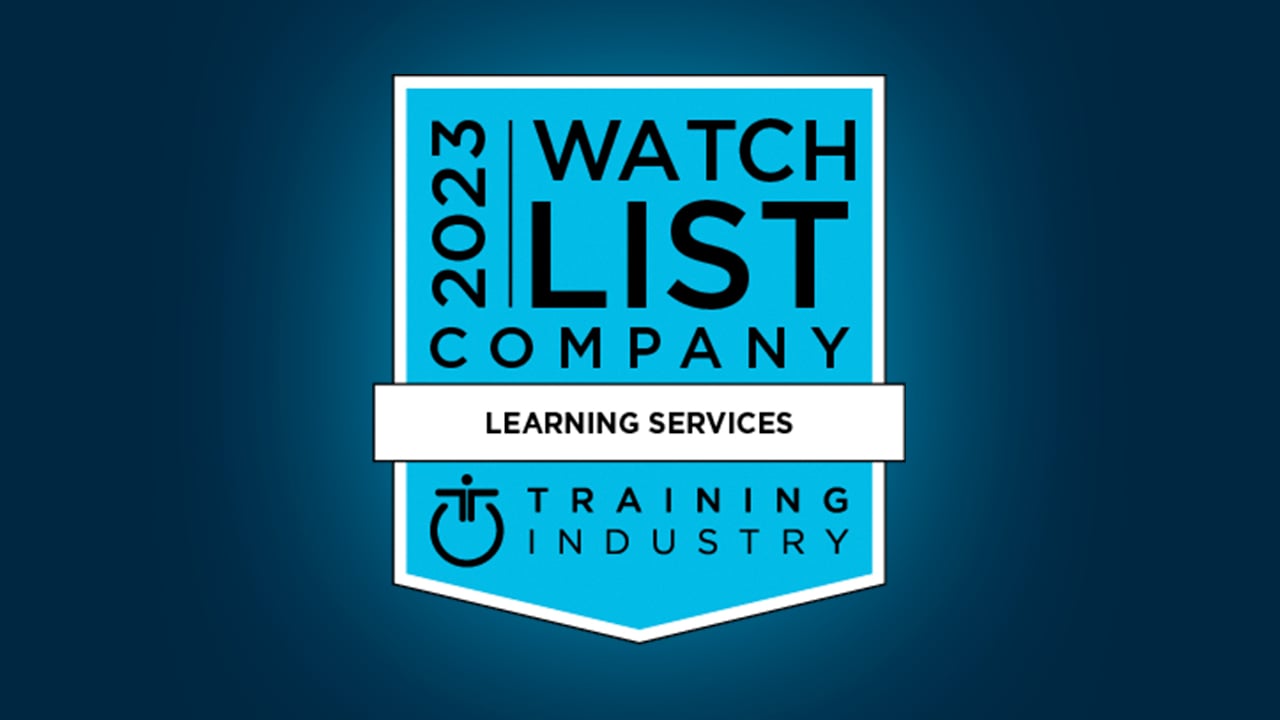InSync Training Recognized As A Top Learning Services Provider
2023 Training Industry Top Learning Services Companies Watch List InSync Training, a leading provider of innovative virtual and hybrid learning...

In a world where "upskilling" and "reskilling" buzz around like bees, it's easy to get caught up in the noise. But what's all the fuss about? Are these just trendy buzzwords making the rounds in corporate circles, or do they hold the key to unlocking a future where hybrid work not only survives but thrives? After all, there's no shortage of chatter on the topic, but cutting through the hype to understand its essence is where things get interesting.
How do we sift through the sea of opinions to actually make a tangible difference in our employees' careers, boost engagement, and keep talent from wandering off to greener pastures?

Wondering why this is so important right now?
The rapid advancement of digital technologies and the global shift towards remote and hybrid work models are really impacting today’s workforce. No surprise there. These changes aren’t going to stop coming. Only organizations that plan for these changes can be successful and continue to grow.
For those of us in learning and development (L&D), our focus is clear - to prepare the workforce for a future where agility, adaptability, and continual learning are paramount.
Think about this - recent studies indicate that up to 30% of jobs in the US could be automated by 2030. Conversely, this wave of innovation is expected to create approximately 97 million new roles. Amidst this backdrop of imminent change, the need to upskill and reskill the workforce has never been more pressing.
People are, if not scared, then concerned. Concerned that AI and automation will replace them. Worried that globalization and the availability for remote work will result in more competition for their jobs.
However, it’s important to remember that “people” are what help organizations remain creative and innovative. As some tasks become more automated, investing in our existing workforce is the way to elevate our organizations’ competitiveness.
Before we can effectively address the skills gap, it’s crucial to understand the difference between upskilling and reskilling. Upskilling is the process of enhancing an individual’s existing skill set, enabling them to advance in their current roles. Reskilling, on the other hand, involves training individuals for entirely new roles, often as a means to address technological advancements or shifts in business strategy.
Upskilling in Action: The Evolution of Training Delivery at FDIC University
In 2019, FDIC University faced a pivotal moment. With the need to modernize its traditional in-person training model, the organization aimed to transition to a virtual training platform. This shift was propelled by the dual goals of enhancing logistical efficiency and reducing training costs, underscored by a critical incident at Silicon Valley Bank in California that highlighted the immediate need for responsive and targeted training programs.
The initial plan focused on upskilling a select group of facilitators and producers for virtual delivery. However, the unforeseen global pandemic expedited the need to scale this initiative, broadening the scope to include hundreds of staff members. A rapid modification of the contract and accelerated training development process ensued, adapting content for the virtual format while adhering to strict regulatory and compliance standards.
The transition to a virtual training system marked a significant evolution for FDIC University, positioning it as a leading department within the FDIC capable of delivering nationwide training efficiently. This transformation facilitated immediate response training during crises, such as the one experienced with Silicon Valley Bank, and ensured uninterrupted operations throughout the pandemic. By eliminating the need for travel, the new system offered substantial time and resource savings.
Reskilling in Action: Navigating Workforce Change Through Targeted Reskilling
Confronted with the impending automation of numerous customer service roles, a large consumer products corporation identified a strategic opportunity to adapt and grow. Rather than succumbing to job loss, the company envisioned transitioning its customer service representatives (CSRs) to inbound sales roles, thereby enhancing the workforce's skill set and contributing to organizational growth.
The company embarked on a comprehensive reskilling strategy, beginning with an in-depth skills assessment of the existing CSRs to identify transferable competencies and areas requiring development. A customized learning program was introduced, combining virtual classrooms, blended learning approaches, and video modules to cover essential sales techniques, customer engagement strategies, and deal-closing tactics. Microlearning and simulated role-playing scenarios were employed to ensure practical application of skills, supplemented by real-time feedback and coaching.
The reskilling initiative culminated in a formal assessment phase, with successful participants receiving certification in sales proficiency. This approach not only mitigated the impact of automation on jobs but also enriched the organization's talent pool with versatile, skilled employees capable of meeting future market demands.
Both examples demonstrate innovative approaches to workforce development through upskilling and reskilling strategies. FDIC University's transition to virtual training demonstrates the value of flexible, scalable training methods in responding to unforeseen challenges and maintaining operational continuity. Similarly, the strategic reskilling initiative highlights how organizations can proactively address technological advancements, turning potential job displacement into an opportunity for workforce enhancement and organizational growth.
Here’s how organizations can implement effective upskilling and reskilling strategies to foster a culture of continuous learning and development.
Implementing these strategies effectively turns the challenge of a constantly changing work environment into an opportunity for growth, innovation, and competitive advantage.
In addressing concerns around AI and automation, it’s essential to frame these technologies not as adversaries but as allies in human development. AI has the potential to personalize learning, making it more efficient and impactful. Furthermore, by automating routine tasks, AI allows employees to focus on higher-value, strategic activities that leverage their unique human skills.
In the hybrid work environment, where global team members split their time between office and remote locations, the strategic importance of upskilling and reskilling cannot be overstated. This model of work demands not only technological proficiency but also a high degree of adaptability and resilience from employees.
The dynamic nature of hybrid workplaces means that roles and responsibilities are constantly evolving. Consequently, organizations must foster a culture of continuous learning to ensure their workforce remains competitive and capable of meeting changing business needs. An effective upskilling and reskilling strategy supports this objective by preparing employees for both current challenges and future opportunities.
It’s about creating a resilient workforce that can pivot and adapt to new working models, technologies, and business strategies with ease.
Upskilling and reskilling serve as crucial tools for enhancing employee engagement and retention. By investing in the development of their workforce, companies signal a commitment to their employees' growth and careers, which in turn fosters a sense of loyalty and belonging among staff. This investment in talent development is particularly important as organizations face the twin pressures of digital transformation and the war for talent.
A well-thought-out upskilling and reskilling strategy not only equips employees with the skills needed to thrive in a hybrid work environment but also helps attract and retain top talent by positioning the organization as a forward-thinking and supportive employer.
Whether you're looking to upskill your current training team or reskill a segment of your workforce, InSync Training is here to guide you every step of the way. Discover the power of our Starter Bundle: a 4-week, research-backed program designed to revolutionize how your team learns. With compelling design, expert facilitation, and essential support, our 90-minute, turnkey pilot program bridges the gap between your workforce and the essential learning they require.
Don't wait to unlock your team's full potential—explore our Starter Bundle today with a virtual learning expert and take the first step towards a more skilled, adaptable, and innovative future.

2023 Training Industry Top Learning Services Companies Watch List InSync Training, a leading provider of innovative virtual and hybrid learning...
BYTE Session Recap This blog post will highlight five key virtual facilitator competencies I discussed in a recent InSync BYTE session. At the end of...

InSync Training to Host Panel Discussion on L&D’s Role in Redefining Workforce Development for the Hybrid Era